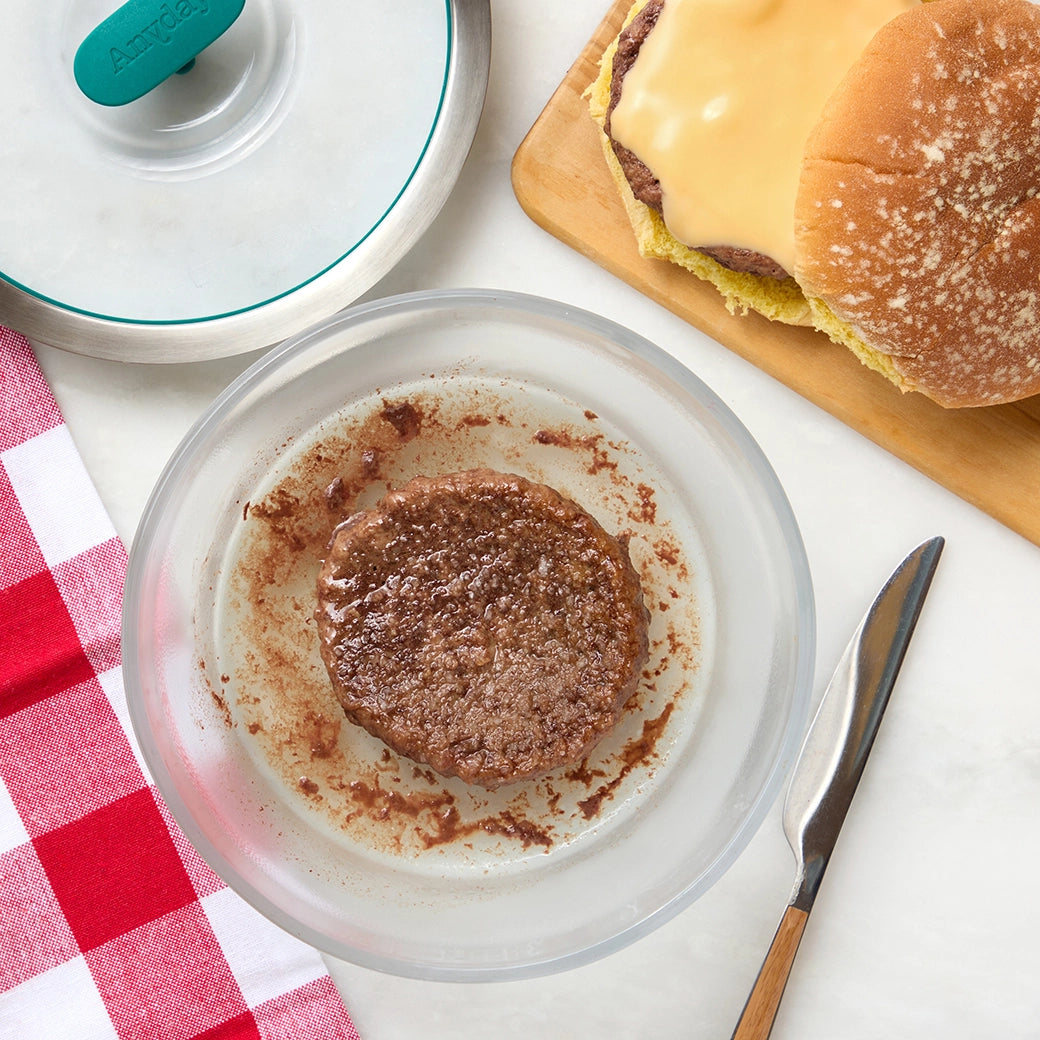Yes, you can microwave a cheeseburger, and it's super easy with an Anyday dish! Season your patty, place it in an Anyday dish with a bit of oil, and cover with the vented lid. Microwave at the desired power level until the meat is cooked to your liking. Add cheese and other toppings, then give it a quick heat for 10-20 seconds. This method reduces splatter and smoke, making it a hassle-free way to enjoy a juicy, flavorful cheeseburger.
How long does it take to cook burgers in the microwave?
The microwave cooking time for a burger varies depending on size or if the meat is fresh or is a frozen patty, but as a general guideline, it takes 3-4 minutes to cook 1 burger. Factors like quantity, microwave wattage, and desired texture play a role. For the best results, start with the lower time range and add more time as needed.
Steaming is a unique method that lets all your toppings shine while melting away the excess fat. While grilling and pan-frying are conventional approaches, steaming provides even heat distribution, which preserves moisture and results in tender, succulent patties. The popularity of steamed burgers, exemplified by Ted’s restaurant in Connecticut, proves why this technique deserves our attention. Whether enjoyed at renowned eateries or prepared at home, steamed burgers offer a flavorful alternative for burger enthusiasts seeking moist and flavorful patties.
Why is there liquid in my dish after cooking the burger?
Excess liquid in your dish after cooking the burger is a result of steam accumulation during the cooking process. As the burger cooks, liquid is released from the meat and gathers on the lid. This is normal and does not affect the burger's quality. In fact, it helps keep the patty juicy and flavorful.
Why do I need to lower the power level?
Lowering the power level when cooking ensures that the meat doesn't shrink excessively, resulting in a juicier and more tender texture compared to cooking at full power. By steaming the meat more gently, lower power levels help retain moisture and enhance tenderness. However, if you're pressed for time, cooking patties at full power is also an option, though opting for lower power levels is recommended for optimal juiciness and flavor retention.
Can I cook different varieties of burgers in the microwave?
Yes, most types of patties can be cooked in the microwave including beef, turkey, and even plant-based meat. While cooking times might slightly vary, the microwave process remains largely the same. This versatility makes burgers a convenient and adaptable choice for microwave cooking.
How do I know when burgers are properly cooked in the microwave?
Burger patties are properly cooked when the meat becomes darker in color and no pink juices are visible. If you're unsure, test a small piece for doneness or use a kitchen thermometer to check if the internal temperature is between 155°F (68°C) and 160°F (71°C). If you plan to finish the patty on the grill or in a pan, aim for the lower end of the temperature range, as the burger will continue to cook once transferred. Remember, microwaves vary, so adjust cooking times accordingly.







